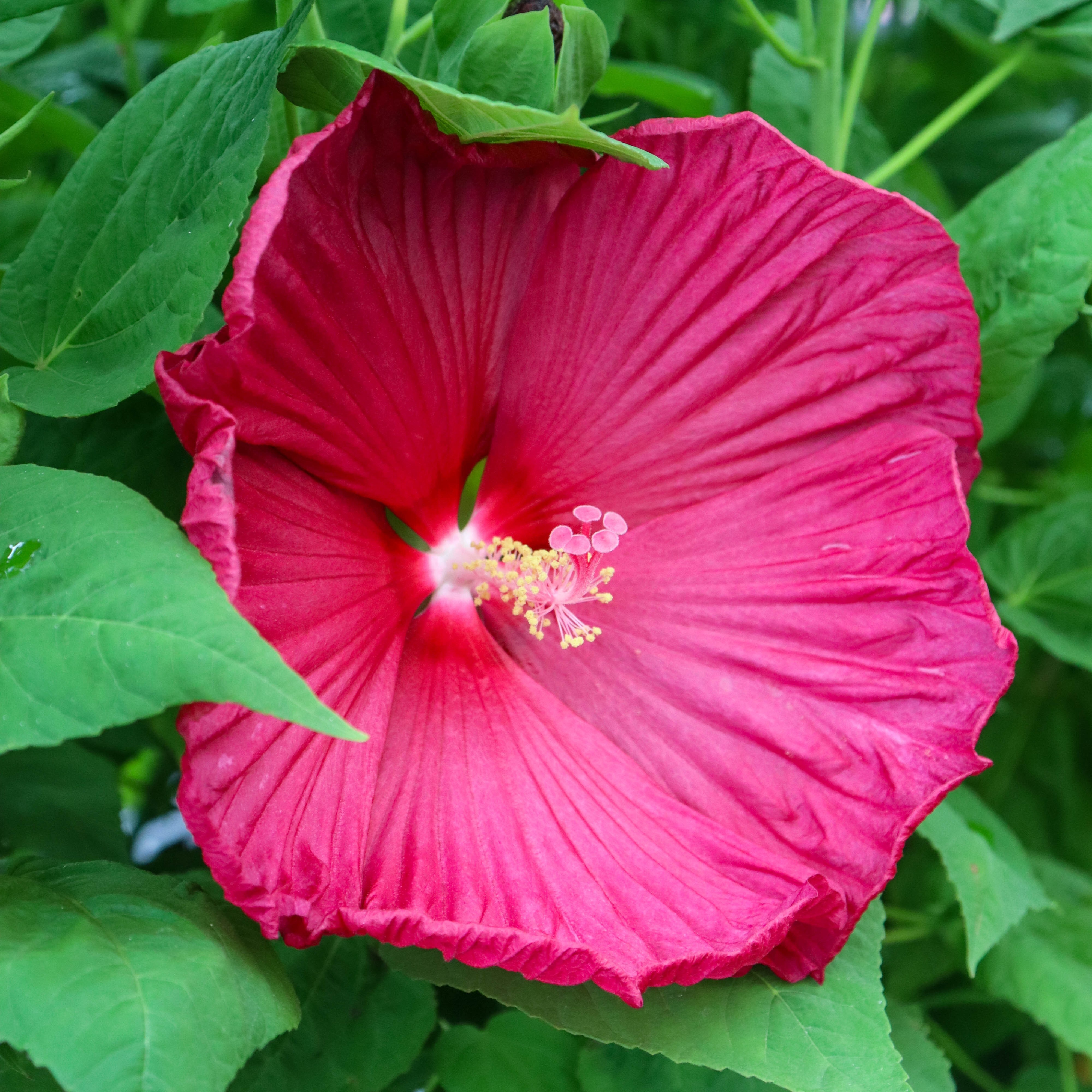Hibiscus

Hibiscus is a large flowering shrub that blooms in the summer.
They can grow to 4’-6’, and come in a variety of colors including, white, pink, red and purple. They prefer full sun, grow well in almost any soil (except extremely wet or dry) and transplant easily. Hibiscus should be pruned every year in early spring.
Hibiscuses are great performers, both in the garden and in bright areas inside the house. If they receive the correct type of care, they reward us with gorgeous blooms throughout the year. Here is what they need to thrive:
1. Most importantly, they need a WARM place so their tropical origins are respected. For best results and lots of blooms, hibiscus should be located where the temperature remains between 60 and 90 degrees. Short periods of either hot or cold will not injure them. But, they may show their displeasure by shedding a leaves or dropping developing flower buds.
If temperatures routinely drop below 50 degrees, most growth and blooming will stop until it warms up again. Flower size will also be much smaller and the occasional blooms may also be misshapen.
Temperatures below freezing will injure hibiscus. Factors such as how cold and for how long, the age of the plant determine how extensive the damage will be. Less than 30 degrees for many hours will most likely kill the plant, so low temperatures should be avoided.
Temperatures over 95 degrees will often cause most flower buds to drop off. Hibiscus can survive temperatures as high as 115 degrees, as long as they have adequate water. When the weather is hot, it is best to maintain a steady supply of water to the plant.
2. Watering can be divided into two areas—cold weather watering and hot weather watering. In hot weather, hibiscus will use lots of water and prefer a steady supply of it. Avoid flooding the roots or allowing the plant to stand in a saucer full of water for an extended time. Hibiscus will develop droopy leaves in hot weather if they do not have enough water. The cure is simple, provide some water and the leaves will regain their crispness.
In cold weather, there is a danger of fungus disease attacking the roots of the hibiscus. Cold and wet conditions are what encourage this. Avoid this problem in colder weather by watering only as much as the plant needs. It is better to let it get too dry than to over water it. This is one of the few things that will cause the early death of a hibiscus plant. If you can keep the roots warm you will have few problems with this.
3. To maintain a healthy hibiscus that blooms frequently, you must feed it. Purchase a good quality plant food and use it regularly. Look at the label for what is often called “minors” such as iron, copper, manganese and other minerals as these are also good for hibiscus.
We recommend using Espoma Organic Palm-Tone to fertilize hibiscus plants.
If you don’t like to fertilize, try using a time-release product like Osmocote that can last for months with just one application.
4. Defend your hibiscus against insects as necessary. Many insects can be driven away by spraying the plant with a water hose. There are other safe treatments our professionals can tell you about too.
5. Do not over pot or change the pot size more than 1 step at a time. In other words, if the plant is in a 2-gallon pot the next step up should be a 3-gallon. It's also important to use a good potting soil with lots of drainage. If planting in the ground, be sure the hole and location will not cause water to build up around the roots of the plant.
